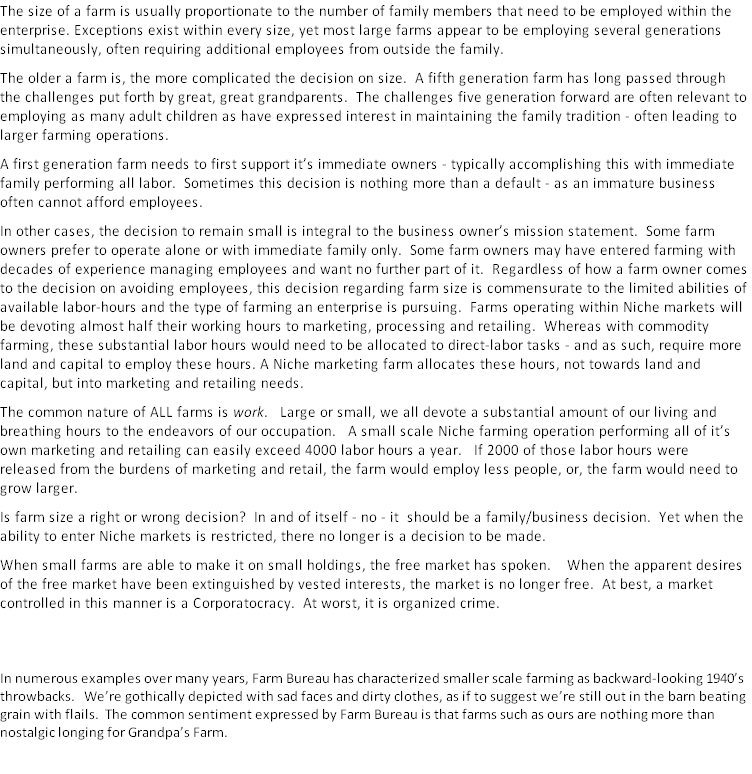Solar Harvest Farm Steve & Michelle Heyer Richie, Sheri & Sarah 7432 Marsh Road, Waterford, WI 53185
Phone: 262-662-5278 · Email: solarharvestfarm@yahoo.com Website: www.solarharvestfarm.com
This writer’s Grandpa did farm through the 40’s. I wonder what he’d think of Farm Bureau’s statements if he were alive to witness how his Grandson’s modern farm operates?:
He’d see that we recognize the biological, environmental and financial value of diverse perennial root systems. We immerse ourselves perpetually on the cutting edge of biological farming science enabling microbe/plant symbiosis, growing our own nitrogen, unlocking soil nutrients into plant usable form, negating the need for purchased fertility. Using perennials, we sidestep the planned obsolescence inherent with annual seeding. By minimizing annual tillage, we facilitate the soil food web, building organic matter and sequestering carbon. We farm in a preventative mindset, acutely aware of the biological ramifications induced by density, duration, agglomeration, uniformity and environment. As such, we mitigate vectors which incite the need for pesticides, herbicides and antibiotics. Where possible, we employ livestock to harvest much of their own feed, reducing dependency on machinery and fossil fuels, often enjoying superior land utilization. He’d recognize that all of this significantly reduces - often even eliminates - many of the substantial input costs imposed upon his 1940’s farm. He’d recognize we aren’t taking our product to the sales barn - we’re retailing it ourselves by having mastered publishing software creating websites, email marketing campaigns and seasonal newsletters for our farm products, all requiring a modicum of composition skills and proficiency. We use spreadsheets, word processing, tax and financial management software. We lock, load and coordinate a complex schedule between farm, processors and hundreds of seasonal customers. We spend immense amounts of time communicating with consumers from order to point of sale. Some of us self-design, install and manage on-farm energy systems that power our farms, our utility vehicles and automobiles.
All of this we do, as Farm Bureau pejoratively admonishes - like Grandpa used to farm?
Yes, there are homesteaders, hobby farmers and a few full time farms which prefer to emulate the old methods of Grandpa’s farm. In respect to smaller scale full time farmers as a whole, these are the exception, not the rule. The majority of full time farms operating within organic biological principles are using cutting edge modern biological technology. Where as commodity technology utilizes GPS auto steer, precision planting techniques and high tech proprietary seed, the technology of organic/biological farmers is microbial. Biological farming will never be as flashy and appealing as is the case with sophisticated high horsepower farm equipment. Conversely, Biological farming technology does not require a young aspiring farmer to have access to a million dollar line of credit.
The perpetual mischaracterization of small farms seems to occur without conscience. Most all large multigenerational farms speak proudly of their great, great grandparents initial claim. Yet many modern day small farms are directly analogous to these great ancestors. Small farms today must endure many of the same initial growing pains as experienced by these great ancestors.
It also seems apparent that most commodity farmers remain unwilling to admit that they too - are already on an organic/biological path. The use of cover crops to prevent soil loss, build root systems and break compaction come directly out of Organic 101 - Organic technology that had it’s origins on 1940’s era organic farms.
Backward? - It’s all a matter of perspective.
Chemically-curative agricultural methods will win many battles. Biologically-preventative agriculture will win the war.




